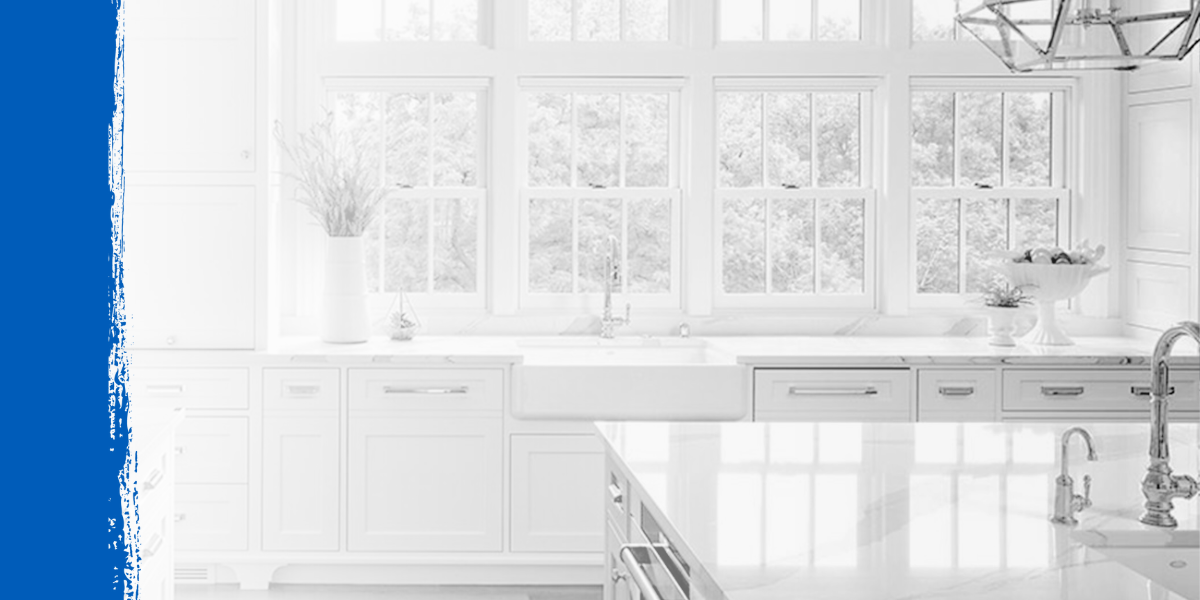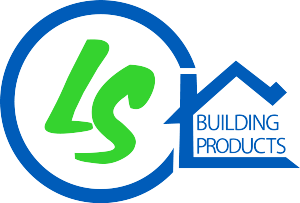When improving energy efficiency in homes and commercial buildings, selecting the right windows and doors plays a critical role. Three key factors—U-Value, Solar Heat Gain Coefficient (SHGC), and Low-E Glass—determine how well windows and doors manage heat transfer, contributing to overall energy efficiency. But how do you know which one to prioritize?
In this post, we’ll break down U-Value, SHGC, and Low-E Glass, explain their applications, and compare them based on cost, climate, and project type. Whether you're working on new construction or renovation, this guide will help you make the best choices for energy-efficient windows and doors.
Table of Contents:
- What is U-Value?
- What is SHGC?
- What is Low-E Glass?
- U-Value vs. SHGC vs. Low-E Glass
- Why Is Energy Efficiency Critical in Building Projects?
- Energy-Efficiency FAQs
What is U-Value?
U-Value measures how well a window or door prevents heat from escaping. It's a key indicator of insulation performance, with lower values reflecting better thermal performance. Windows with a low U-Value retain heat, making them ideal for colder climates where maintaining warmth inside is essential.
The Importance of R-Value in U-Value Calculations
In addition to understanding U-Value, it's important to know about R-Value, which measures a material’s resistance to heat flow and transfer. The higher this value, the greater the insulation the material provides.
Why Knowing R-Value Matters
- Improved Insulation: This value gives insight into a material’s ability to resist heat flow. While U-Value reflects heat loss, R-Value shows the insulating capacity of windows and doors.
- Complete Picture of Energy Efficiency: It is particularly helpful when comparing materials. For example, two windows with the same U-Value might have different R-Values, meaning one provides better insulation even though their heat loss rates appear similar.
- Layering and Material Choices: Materials like wood and fiberglass offer higher R-Values than aluminum. Knowing this can help builders choose the right window and door treatments based on the structure and climate needs.
Pros of Low U-Value and High R-Value Windows:
- Energy Efficiency: Combining low U-Value with high insulation ensures better thermal resistance and reduced heating and cooling costs.
- Optimal Insulation: Homes and commercial buildings maintain consistent indoor temperatures, improving overall comfort.
Cons:
- Cost: High-performing windows with low U-Values and excellent insulating properties, like triple-pane or Low-E coated windows, tend to have a higher price tag.
What is SHGC?
SHGC (Solar Heat Gain Coefficient) measures the amount of solar radiation that passes through a window and becomes heat inside the building. A lower SHGC value means less heat passes through the window, making it ideal for hot climates.
Pros of Low SHGC Windows
- Perfect for Hot Climates: In sunny, warm climates, low SHGC windows reduce cooling costs by blocking excess solar heat.
- Sunlight Control: Windows with low SHGC allow light without contributing to overheating.
Cons
- Cold Climates May Suffer: In cooler regions, lower SHGC may block valuable solar heat, increasing reliance on heating systems during the winter months.
What is Low-E Glass?
Low-E Glass (Low-Emissivity) refers to glass coated with a thin layer of metallic particles that reflect infrared and ultraviolet light. This means Low-E glass helps control indoor temperatures by reflecting heat inside during the winter and keeping it out during the summer.
Pros of Low-E Glass
- Year-Round Efficiency: By reflecting heat, Low-E glass keeps homes warmer in winter and cooler in summer, contributing to overall energy savings.
- UV Protection: It blocks harmful UV rays that can damage furnishings and interior finishes.
Cons
- Moderate Cost: While not as expensive as low U-Value windows, Low-E glass typically costs more than traditional glass due to the advanced coating.
U-Value vs SHGC vs Low-E Glass: Which Should You Use?
When selecting windows or doors, understanding how these factors interact is crucial for making the right choice. Let’s break it down based on climate, cost, and project type.
Climate Consideration
- Cold Climates: Prioritize low U-Value windows to keep heat inside during harsh winters. Low-E glass can also add value by reflecting heat back into your home.
- Hot Climates: Focus on low SHGC values to minimize solar heat gain and reduce air conditioning costs. Pairing low SHGC windows with Low-E glass provides added UV protection and temperature control.
- Mixed Climates: Use Low-E glass windows with balanced U-Values and SHGC to optimize efficiency year-round.
Cost Comparison
- U-Value Windows: Generally, windows with lower U-Values, such as those with triple glazing or gas-filled panes, are more expensive. These are ideal for long-term savings in cold climates where heating costs are high.
- SHGC Windows: Windows with low SHGC values may come with a mid-range price tag. They are ideal for sunny regions, and the reduced cooling costs often offset the initial investment.
- Low-E Glass: Low-E coatings add 10-15% to the cost of standard windows. However, they offer solid energy savings in both hot and cold climates, making them a versatile choice for most projects.
Project Type
- Residential Homes: Homeowners in cooler areas should prioritize low U-Values for energy savings, especially in northern regions. In warmer areas, low SHGC values are essential to prevent overheating. For balanced climates, Low-E glass provides the best of both worlds.
- Commercial Buildings: Energy efficiency is a major concern in commercial projects, especially with large window installations. Low-E glass windows paired with optimized U-Values and SHGC are often the best choice, offering long-term energy cost savings and meeting stricter building codes.
- Remodeling and Retrofits: For renovations, consider upgrading to Low-E glass windows, especially if you're improving energy efficiency without replacing the entire window structure.
Materials, Durability, and Lifespan
The materials used in windows and doors can impact both cost and energy performance. Here’s how each material fares:
Vinyl
- Cost: Budget-friendly and widely available.
- Durability: Highly resistant to moisture and weather, vinyl windows last up to 30 years with minimal maintenance.
- Performance: Offers great insulation properties, which can help lower U-Values.
Fiberglass
- Cost: More expensive than vinyl but less than wood or aluminum.
- Durability: Fiberglass windows are highly durable, resisting warping, cracking, and weathering, with a lifespan of 30-50 years.
- Performance: Excellent at reducing U-Value, and it works well with Low-E coatings.
Wood
- Cost: Wood window costs typically run higher, making it less affordable for those with tighter budgets.
- Durability: With proper care, wood can last up to 30 years or more, though it requires regular maintenance to prevent rot and warping.
- Performance: Provides good insulation but may struggle in maintaining SHGC and Low-E performance without added coatings.
Aluminum
- Cost: Mid-range
- Durability: Aluminum is strong and can last up to 30-40 years, but it’s less energy-efficient unless thermally broken.
- Performance: It’s better for modern, sleek designs but often needs Low-E coatings to improve energy efficiency.
Why Is Energy Efficiency Critical in Building Projects?
Energy efficiency is a key consideration in modern building projects, impacting both immediate and long-term costs, environmental sustainability, and overall occupant comfort. Whether constructing a new home, renovating an office building, or retrofitting a commercial space, prioritizing energy-efficient materials like windows and doors can significantly improve a project’s performance.
Here are several reasons why energy efficiency is critical:
Reduced Energy Costs
Energy-efficient windows and doors help regulate indoor temperatures, reducing the need for excessive heating in the winter and cooling in the summer. By lowering energy consumption, both residential and commercial buildings benefit from reduced utility bills.
Builders who focus on energy efficiency can offer clients long-term savings, making their projects more attractive in competitive markets.
Environmental Sustainability
Reducing energy consumption also minimizes the environmental impact of a building. Energy-efficient materials help decrease carbon emissions, a major contributor to climate change. As governments and regulatory bodies push for greener building practices, energy-efficient projects align with environmental goals and often qualify for sustainability certifications, such as LEED or ENERGY STAR®.
Improved Indoor Comfort
Energy-efficient windows and doors enhance thermal performance by reducing drafts, heat loss, and temperature fluctuations. This leads to more consistent indoor temperatures, improving comfort for residents and building occupants. Additionally, materials like Low-E glass provide UV protection, helping to prevent fading of furniture, flooring, and interior finishes.
Increased Property Value
Buildings that prioritize energy efficiency often see higher resale values. Homebuyers and commercial property investors are increasingly looking for features that reduce long-term costs, enhance comfort, and promote environmental responsibility. Incorporating high-performance windows and doors not only improves the functionality of the building but also adds to its market appeal.
Compliance with Building Codes and Regulations
Building codes across the U.S. increasingly emphasize energy efficiency, with many regions requiring strict compliance with energy performance standards. For instance, window and door selections often need to meet specific U-Value and SHGC ratings depending on the local climate zone.
Ensuring compliance with these regulations prevents costly retrofits and delays while also qualifying the building for potential tax incentives or rebates.
Future-Proofing Against Rising Energy Costs
Energy prices tend to fluctuate, and in many areas, they are rising. By investing in energy-efficient materials during the construction phase, builders and property owners can hedge against future increases in energy costs. This proactive approach ensures long-term financial stability for both residential and commercial properties.
Energy-Efficient Window and Door FAQs
Which is more important, U-Value or SHGC?
It depends on your climate. In cold regions, U-Value is more critical for retaining heat. In hot climates, SHGC is more important for blocking heat from entering your home.
Is it bad to have windows with a high U-Value?
Windows with a high U-Value allow more heat to escape, making them less energy efficient, especially in colder climates where heat retention is key. However, in some building situations, such as in temperate or tropical regions where heating is rarely needed, a higher U-Value may not be a major concern. For example, in warm climates where cooling is the priority, a window’s SHGC is more important than its U-Value, as it helps reduce solar heat gain.
How much does Low-E glass cost?
Low-E glass costs about 10-15% more than standard windows, but it pays off in long-term energy savings by improving temperature control and protecting your home from UV damage.
Do I need to replace all my windows to improve energy efficiency?
No, you can replace select windows or add Low-E storm windows to improve efficiency. However, replacing old windows with modern, energy-efficient models can significantly reduce energy bills.
Can I combine Low-E glass with low U-Value and low SHGC?
Yes, many energy-efficient windows come with Low-E coatings to further enhance their U-Value and SHGC, providing the best energy performance for both hot and cold climates.
Are Low-E windows worth it in mixed climates?
Absolutely! Low-E windows offer the best balance for regions with both hot summers and cold winters, keeping homes comfortable year-round without skyrocketing energy costs.
Optimize Your Window and Door Selection with LS Building Products
At LS Building Products, we offer a wide range of energy-efficient windows and doors from top brands like Marvin, Andersen, and Quaker. Our team is ready to help you find the best options for your climate and project needs.
Contact us today for a quote and take the first step toward enhancing your building’s energy efficiency!
.png?width=98&height=67&name=Logo%20(13).png)
.jpg) Energy-Efficient Windows: U-Value, SHGC, & Low-E Glass Explained" loading="lazy">
Energy-Efficient Windows: U-Value, SHGC, & Low-E Glass Explained" loading="lazy">
.png)

.png)


